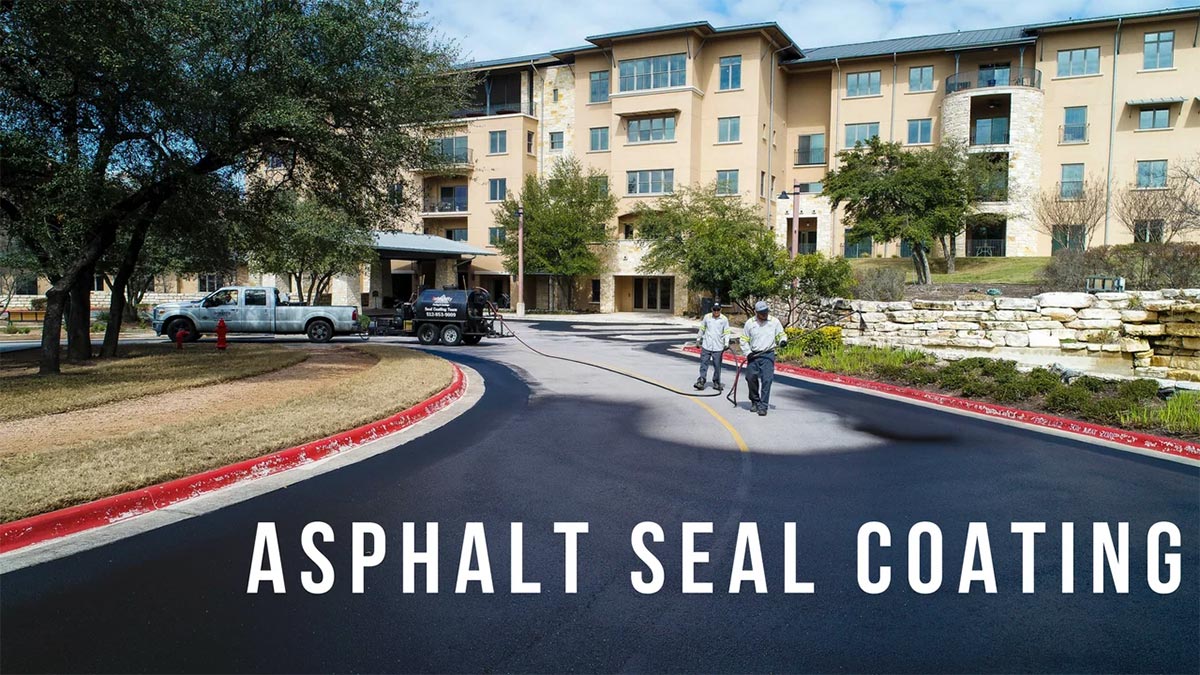Sealcoating involves the process of applying a protective cover to asphalt roadways. In most cases, sunlight oxidation and penetrating moisture cause the damage. If the pavement is bare, the sun weakens it, and it starts to erode. Over time, moisture penetrates the tiny cracks, widening and deepening them. Every 3-4 years, you need to sealcoat your pavements to protect them from such damage.
Factors such as the time or season impact how well it goes as they play a key role in the drying and curing of the sealcoat. Such factors help the service provider to deliver high-quality and durable end products. In this article, we inform you of the best time for sealcoating.
Seasons
Sealcoating depends on two main factors; temperature and rainfall. The ideal temperature of the surface for sealcoating should be 55˚ F and rising. If the temperatures fall to freezing level, the water within the sealcoat may freeze. It causes the sealcoat to separate and peel off.
Extreme hot conditions may also be unfavorable for the process. Temperatures above 95˚ F dry the sealcoat before it adheres to the surface of the pavement. In some cases, the binder used in sealcoating melts when temperatures hit 100˚ F.
With that, the best season of the year to carry out the process is in late spring and summer, between May and September. But not every day is perfect for sealcoating. You need to find one that will ensure proper drying and curing, with all factors combined.
Weather
Cloud cover
Cloudy conditions prevent the sun from reaching the seal-coated surface. This increases the time it takes to dry up and at times prevents complete drying. sealcoating requires direct sunlight for most of the day. This ensures the durability of the coating after drying. Cloud cover also denotes more moisture in the air. The perfect drying conditions need low humidity. This is so that it may give way for the moisture in the sealcoat to evaporate.
Humidity
Humid conditions have moisture saturated in the air. The process of drying and curing involves the evaporation of moisture into the air. If the conditions are humid, it slows down the process which may affect the quality of the end product. A slight increase in the humidity percentage may double the time for drying the sealcoat. This might be inconvenient especially if you have to block the area from daily use. In an ideal case, the level of humidity in the air should be below 60 percent. Another aspect to consider is fog as it leads to ground-level clouds. The humidity level rises to 100% which affects the quality of the sealcoat. If it’s foggy in the morning, ensure you wait until it’s all clear to start the process.
Rain
In the rainy season, the sealcoat is unlikely to adhere to the asphalt surface due to wetness. The surface must be completely dry to apply the sealcoat. Even after the cover, rain is unsuitable for the drying and curing of the sealcoat. In some cases, heavy rainfall may carry away the coating from the surface before drying up. It is advisable to wait until the weather and the surface are dry to begin the process.
Wind
The wind accelerates the process of drying especially when combined with the sun. But it may lead to other problems. If the wind is gusting beyond 10 miles per hour during the spraying process, it might cause damage to nearby buildings or vehicles. You should thus avoid sealcoating on very windy days. This will help prevent extra costs in repairing the damages in the surroundings.
Time of day
The sealcoating experts from CSG Sealcoating, Orlando, sealcoating at night may be more convenient for the business. But it will need direct sunlight for the coating to dry up. Sunlight also makes it easier for the crew to work, unlike in the dark where the process may be slower. Even when the surface feels dry, it is better to wait for daytime to sealcoat your pavements.
So, since you now understand the best time for sealcoating your asphalt pavement, how does it get to benefit from sealcoating?
- Sealcoating protects asphalt from water damage – failing to sealcoat your pavement leaves it susceptible to water damage. If the surface has cracks, water can seep into the cracks, and this can make the cracks larger or lead to the formation of potholes. But, when you sealcoat your pavement, you seal these cracks, thus giving your pavement an extra layer of protection. With that, you don’t have to worry about your pavement whenever it rains.
- Protect your pavement from spills – most paved surfaces like driveways, parking lots, and roadways are subject to oil and gas spills. While these liquids might seem harmless, they can corrode your asphalt, thus shortening its lifespan. However, sealcoating your asphalt pavement prevents spills from staining and penetrating the area.
- Sealcoating improves the curb appeal of your property – the deep, dark color of freshly sealed asphalt pavement makes your property look attractive. With sealcoating, you will get that same curb appeal as a newly paved surface.
Improves the lifespan of your pavement – generally, sealcoating your pavement can help to extend its lifespan. Besides, sealcoating helps to reduce the long-term repair costs and helps you to avoid resurfacing or replacing your pavement a few years after its installation.
